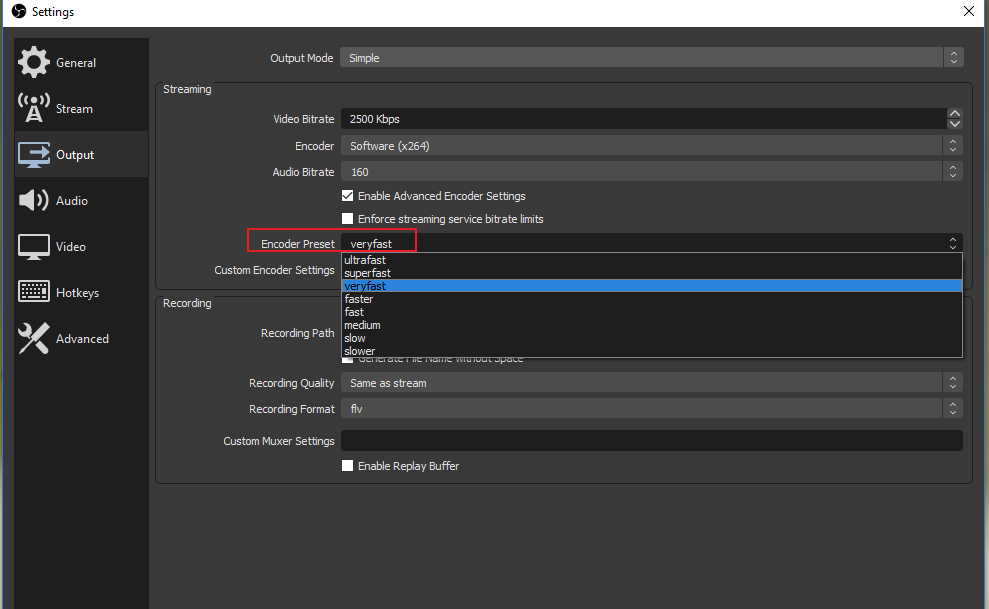

The faster the speed, the less CPU power is used. They represent different speeds of encoding. Your last stop should be the CPU Usage Presets. In addition, OBS makes the following adjustments to the defaults: H264 Option Since you’re working out your best recording settings for OBS, you can be more casual about keyframes. Should you run into performance or image quality issues, please try with the defaults first (remove any extra options).Īs a baseline the encoder uses the defaults of AMF (see AMF docs). It is recommended to try the default settings first as it tries to strike balance between quality and performance. Similar to "Psycho Visual Tuning" on the NVIDIA side. Tries to prioritize bits to parts of the image human vision tend to care about. Set using EnableVBAQ=true/false.Įxplanation: Adaptive quantization. VBAQ (Variance Based Adaptive Quantization). It essentially works a bit like pseudo two-pass for a short number of frames, and will analyze the incoming video frames to try to make better decisions. It may also disable "Rate Control Pre-Analysis" and "VBAQ" according to the AMF documentation. If you're running games + obs, please be aware that in game performance will take an additional hit if this is enabled. This option is disabled by default, and it has some impact on GPU performance. More b-frames is more difficult to encode, and more is not necessarily better, so try 1 or 2 first. Examples B-framesĬurrently it seems that only RDNA2 (RX 6000+) has access to B-Frames. The input needs to be formatted as such: parameter=value parameter=value (space between each).įor instance RateControlPreanalysisEnable=false EnableVBAQ=false There are times where it could be useful to make some adjustments to the default, and that can be done in this field. There is no "best settings" that will fit every scenario, hardware and intent. If the driver/hardware is not able to deliver this throughput information, it defaults to "balanced". If a user tries to do 4k resolution at 60fps, and the GPU is not able to handle it at the "Quality" preset, then it will automatically drop to a faster preset, which can be observed in the OBS log. This is mainly to guard older and lower end GPUs from performance issues. There is a check in place to query the encoder for how much throughput its able to handle. The new implementation includes a more up to date AMF version, and simplifies the interface/settings drastically. You'll find it in both H.264 and HEVC flavors. With the release (and beta) of OBS 28, there is now a new AMD AMF Encoder implementation named "AMD HW".


 0 kommentar(er)
0 kommentar(er)
